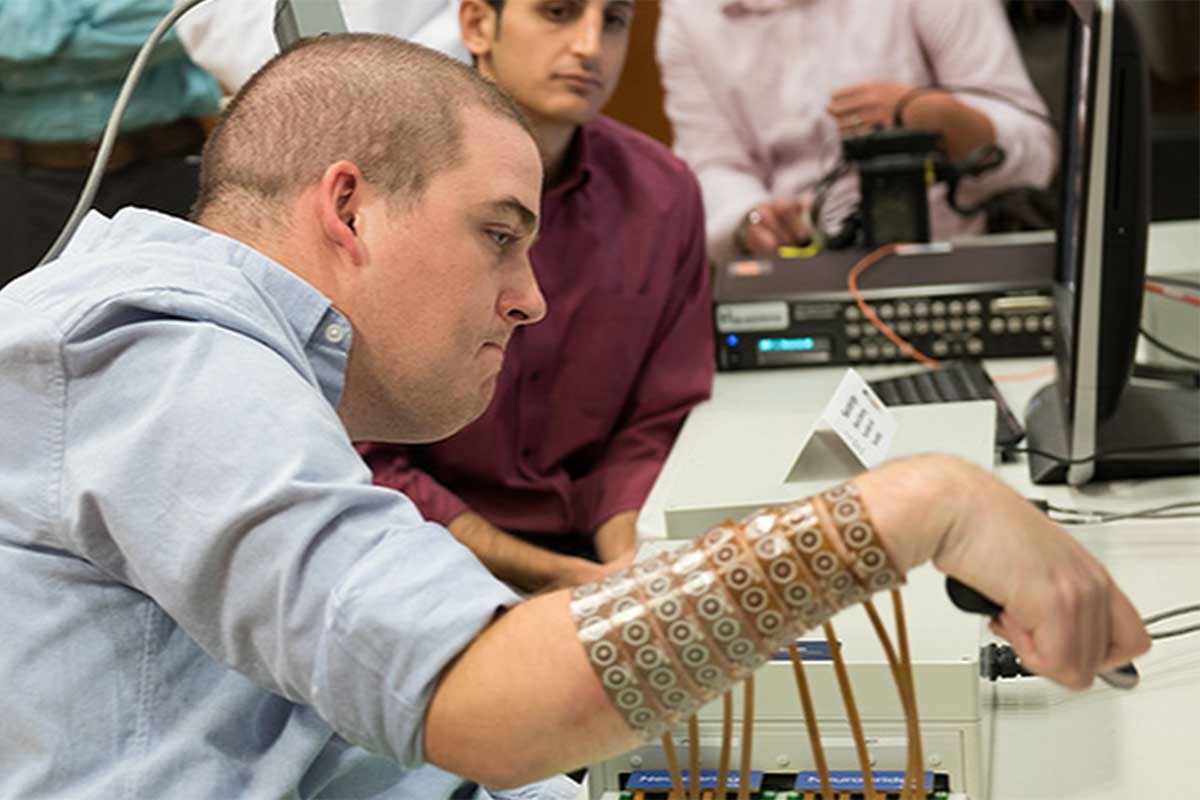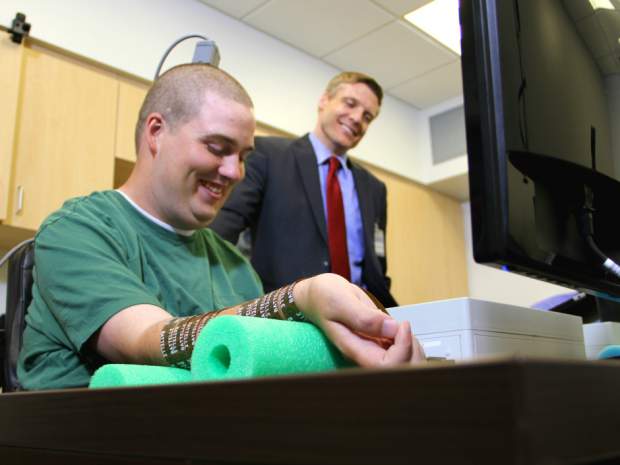I’m the first quadriplegic person to regain thought-control of my arm
After being paralysed six years ago, Ian Burkhart is now able to swipe a credit card and play the computer game Guitar Hero, thanks to a device that uses machine learning to read his thoughts and stimulate his arm.

Ian Burkhart, Ohio State University/Batelle.
By Ian Burkhart, New Scientist 13 April 2016
I’m the first quadriplegic person in the world to use my own thoughts to control my own arm. It’s a pretty neat experience.
It was about six years ago that I had an accident where I broke my neck from diving into the ocean. I was diagnosed as a quadriplegic then. Being told you’ll never be able to walk again or use your hands when you’re 19 years old takes a big adjustment.
I have a little bit of movement in my shoulders, but nothing from the elbows down.
Right now in my everyday life I need a lot of assistance, even for little things, such as getting out of bed and into my wheelchair, brushing my teeth or cutting up my food. But I kind of always knew that there would be something that would benefit my life, with the way that technology and medicine were progressing.
When the Ohio State team approached me as a possible candidate for their research study, I got really excited. Initially, they were just doing some testing on my muscles. Then it came down to the million dollar question – did I want to undergo brain surgery that I did not need?

Ian Burkhart with Chad Bouton, research leader from Battelle, who pioneered the Neurobridge technology, with doctors from The Ohio State University Wexner Medical Center.
I had a lot of faith in the team, but I had to convince my family. I took the standpoint that I had a great opportunity to turn the misfortune of my accident into something that can benefit a lot of people. I realised that having the surgery was a risk I was willing to take.
When I’m not connected to anything, the portion of the brain implant that stays with me protrudes from my skull about half an inch, and is about a third of an inch in diameter. It’s like a stack of a few coins. It was very sore initially, and completely foreign to me. But it’s grown to be a part of me.
When we first used the device, it was something that took a lot of concentration. I would feel completely mentally drained and physically exhausted after a session. But now after two years, it is a lot easier to operate.
It’s a weird thing when someone asks you to open your hand. It’s something that you, or me before my accident, wouldn’t even think about. But when you’re trying to work out what part of your brain you have to work, and what muscles you are trying to move to get that motion, you have to think a lot.
But with practice, practice, practice, I’m able to do it a lot faster. And now when they introduce something new, it’s a lot quicker than it used to be.
Seeing my hand move for the first time was really exciting. At that point, it was just over three years since my accident. When I was able to think “open my hand” and my hand opened, it really gave me that flicker of hope.
Now, we’ve been able to do more functional movements – things that will really impact my everyday life. I’ve been able to pick up a credit card and swipe it, and pour the contents of a bottle. I can pick up a mug and bring it to my mouth. We even played a guitar video game, and that was a lot of fun.
Right now, I can only use the device for a few hours a week at the lab. But I’m pushing to be able to take it home. I know the team are working on a way to make the technology smaller.
I’m lucky I was able to be a part of this. It may not be something that I will benefit from in my lifetime, but it’s certainly getting there.
| As told to Jessica Hamzelou. |
Source New Scientist
| After a broken neck left him quadriplegic, Ian Burkhart was told he would never be able to use his hands. Now he can grasp a bottle and pick up a credit card by using a computer plugged directly into his brain. YouTube Apr 13, 2016. |
Also see
‘Magical’ To ‘Rip It Out’: Different Brain Implant Experiences Barron’s
Thanks to 96 electrodes implanted in his brain, quadriplegic man regains use of his right hand The National Post
Chip, Implanted in Brain, Helps Paralyzed Man Regain Control of Hand The New York Times
